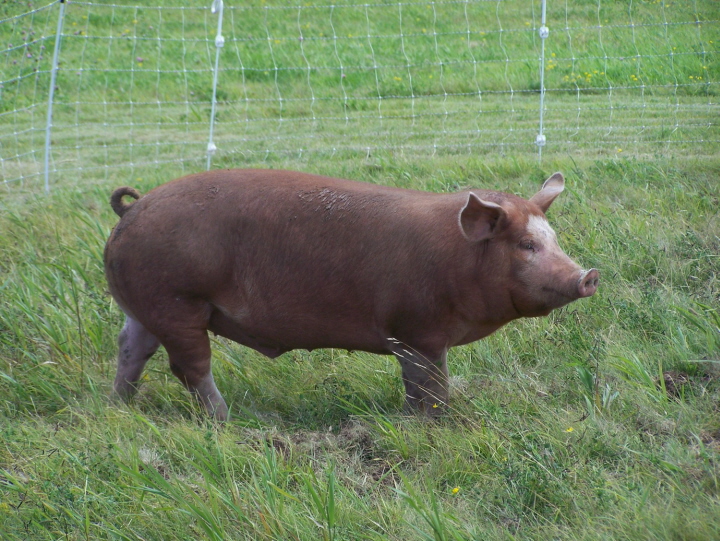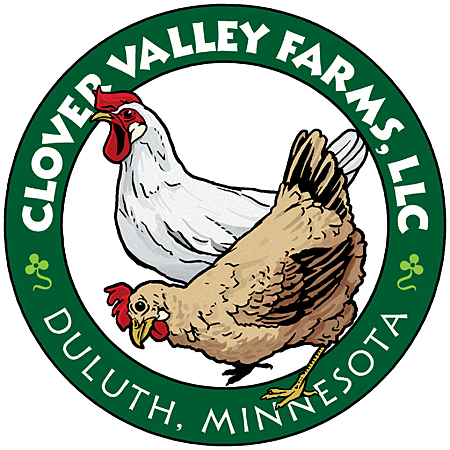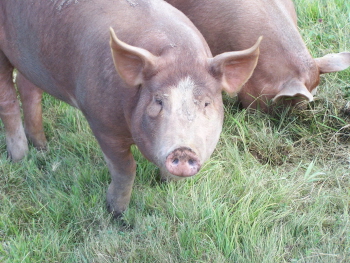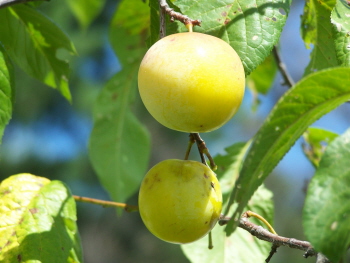Business Planning
The Chicken or The Egg?
Cindy and Jeff’s model has been one of gradual growth that is closely tied to available resources and lifestyle choices. As mentioned under Assessing & Planning > Getting Started, for Cindy and Jeff, it was a case of the chicken coming first – but eggs were close behind. Other products, such as herbs and fruit, were always in the works too because of the existing greenhouse and fruit trees.

As the business grew, customers asked for other products like pastured turkeys, lamb, and pork. Hogs were a good fit for Clover Valley Farms because they could be raised from feeders in the spring to finish weight by fall. As long as Jeff and Cindy both have off-farm jobs during the academic year, they expect to avoid producing animals that require year-round care, with the exception of the laying flock, which they find easy to manage. Another benefit they hope to realize by raising hogs is that rotating them with chickens on pasture will increase the quality and quantity of pasture forage without tilling, seeding, or soil amendments (see Production > Production Methods > On-Farm Research). With improved pasture quality, they hope to see the economic benefits of getting more marketable meat with less supplemental feed.

Jeff and Cindy’s approach to growth is to try new products first on a small scale, where the emphasis is on learning and not making money, and then to increase production and work toward profitability as resources allow. As mentioned above, customer requests also come into play. For the first year of raising a new animal, they include it on the pre-order form that goes out to customers each spring as a “just-in-case” option (Appendix I). With broilers, for example, they didn’t sell birds until the fourth year of production; with ducks, turkeys, and hogs, they sold small numbers in the first year (see Table 1, below).
Table 1. Summary of farm growth through 2010 (round numbers).
Year |
Hogs |
Poultry (Meat) |
Poultry (Eggs) |
Fruit |
Wholesale Herbs |
2004 |
|
6 broilers |
|
|
|
2005 |
|
15 broilers |
|
|
|
2006 |
|
25 broilers |
|
|
|
2007 |
|
50 broilers* |
|
|
Small quantities of 6 bulk herbs* |
2008 |
|
150 broilers |
25-hen laying flock* |
|
Packages (¾ oz. clamshell) of 7 herbs, 1-2 times per year |
2009 |
3* |
300 broilers |
35-50 hen laying flock |
50 lbs of apples* |
Packages of 7 herbs, 2-3 times per year |
2010 |
5 |
300 broilers |
50-hen laying flock3 |
none2 |
Packages of 8-9 herbs, 3-4 times per year; garlic and garlic braids |
*first year of sales
1”Males” here refers to males of breeds using for laying and not kept as roosters for breeding; stewing hens are retired laying hens (see Production > Production Methods > Poultry).
2No apples sold in 2010 while Cindy and Jeff focused on establishing a new orchard (see Production > Production Methods > Apples & Other Fruits) and also adding 20 currant bushes. Apple sales were expected to resume in 2011.
3Egg sales in 2010 are described under Production > Yields & Profitability > Poultry.
Farmer's Perspective: Lessons Learned Jeff and Cindy use the principles of adaptive management to make decisions about farm planning. In other words, they keep track of how well their past decisions played out, then use that information to make the next set of decisions, so that their choices continually build on the knowledge they’ve acquired. As an example, in 2010, they decided that all poultry processing in the future needed to be done by the end of August. Until then, processing of some birds had always occurred in September, when apple harvest comes into full swing and Jeff has gone back to work at his off-farm job. To accommodate this change in the processing schedule, they expect to adjust their production schedule and possibly the breeds of poultry they raise (because the birds will have less time to grow and reach processing weight). |
|
Cindy and Jeff manage this growth by having what they call “corporate meetings,” where they discuss planning for each season, develop monthly calendars, and review finances. They decide on the numbers and types of animals to raise each season by consulting their detailed inventories, which tell them how well they are tracking toward profitability (see also Production > Yields & Profitability), and by assessing how well the previous season went in terms of scheduling and quality of life. The way they integrate tasks throughout the year is shown in their annual calendar (Appendix II). Jeff and Cindy prepared a business plan in 2010 as part of the process of becoming a Limited Liability Company (LLC) (see also Farm Business > Business Structure). They expect to do annual updates that will help them track their progress. Their formal planning efforts actually started earlier, however. Jeff and Cindy feel the most important outcome of their participation in LSP’s Farm Beginnings class was that it forced them to talk more about their goals and plans. Now, their detailed planning happens in the context of the overall vision statement they formulated in 2009 (see sidebar). |
Make a profit. This includes working toward a wage of $12/hour for Cindy and Jeff’s labor and then growing that to $20/hour. Keep stress to a minimum. This means keeping a balance between work and the things that provide physical, mental, emotional, and spiritual renewal, such as:
Nurture community and quality of life. Cindy and Jeff’s farming practices seek to:
|
Educator's Perspective: Resource Tip A MISA publication called Building a Sustainable Business: A Guide to Developing a Business Plan for Farms and Rural Businesses assists with the creation of a holistic business plan rooted in personal, community, economic, and environmental values. A free online course called Strategic Farm/Ranch Planning and Marketing, one of a series in SARE’s1 National Continuing Education Program in Sustainable Agriculture, covers goal setting, developing business and marketing plans, managing risk, meeting with lenders and alternative financing, transferring farms, and understanding retirement options. A free online business planning tool called AgPlan, from the Center for Farm Financial Management, offers tips and resources for writing a plan and provides an option for getting it reviewed. The U.S. Small Business Administration has Small Business Development Centers throughout the country that offer free consultations for business planning. Click here for an office locator. 1Sustainable Agriculture Research and Education, a program of the USDA. |
 |
 |


